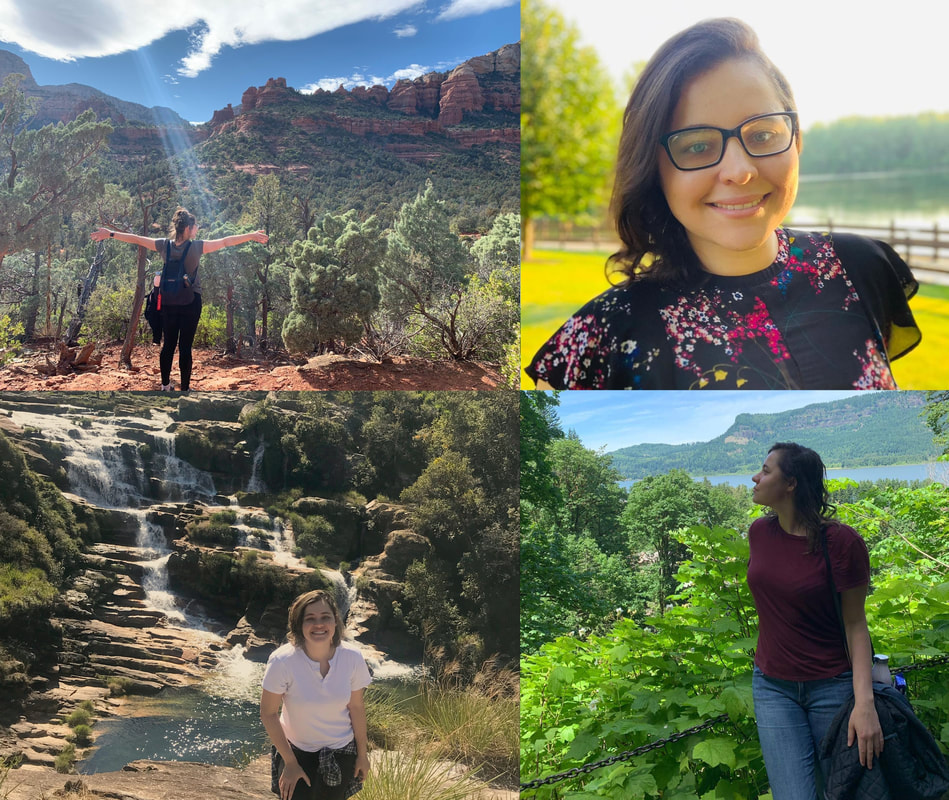Scientifically speaking, Ecohydrology is the discipline that addresses the interconnection between the environment and water fluxes. For me, ecohydrology goes beyond the investigation of these interlinks. Ecohydrology is the link between my professional and personal life. I love studying how the environment mechanisms are interconnected with hydrological processes in the face of human interventions. Investigating these relationships is crucial to develop solutions for a more sustainable future. Ecohydrology allows me to do that, and I am grateful for all the scientists that have contributed to a better understanding of the effects of hydrological processes on ecosystem functions.
What are your undergraduate and graduate degrees in?
I got my undergraduate degree in Forest Engineering from the Federal Rural University of Rio de Janeiro (UFRRJ) together with an exchange program at Oregon State University. I have a Master’s in Physical Geography from the University of Kentucky and almost a Ph.D. in Civil and Environmental Engineering from Arizona State University.
How did you arrive at working in/thinking about ecohydrology?
I grew up in a rural area (small fruit farm) in Rio de Janeiro, Brazil. While growing up, I was curious about the plant mechanisms and how trees used to produce what I was seasonally harvesting. Over time, I saw a shift in my farm’s landscape. I saw trees drying out, wildfires happening with more frequency, and our small pond turning to foamy green. This is one of the reasons I became a forest engineer and got a master’s in geography. My master’s mentor, Dr. Daehyun Kim, opened my eyes to the spatial phenomena and their unexplored interlinks with water quality. I felt that everything I learned was helping me find the answers and solutions to my own farm back in Brazil. Today, together with my mentor Dr. Rebecca Muenich, I went beyond local scale understanding. I developed regional and national scale models to better understand the impact of specific water pollution driving agents and how this pollution holds over time and space. I like to call myself a watershed modeler and a geospatial data enthusiast, and I see much yet to be studied within climate, hydrological processes, and human interventions.
What do you see as an important emerging area of ecohydrology?
With rising temperatures and more frequent extreme events, there is a lot we need to understand to develop environmental solutions. With the intensification of hydrological phenomena, most of the ecosystems interlinks we know may be jeopardized. I see the field growing towards interlinks among nutrient interactions, climate, human interventions, and most importantly spatial and temporal correlations among all these phenomena, I believe understanding these interconnections will help us better describe tipping points and develop more assertive solutions.
Do you have a favorite ecohydrology paper? Describe/explain.
It is hard to choose only one. I am very impressed by the work of Dr. Marie-Josée Fortin. Her research, in general, has guided me through my first year in graduate school, principally her book Spatial Analysis: a guide for ecologists, that until this day, I keep referring to for refreshing spatial modeling concepts and rules of thumb for spatial analysis and phenomena. Additionally, one of my favorite papers is by Dr. Jonathan D. Phillips “Badass Geomorphology”. This paper showed me how science can be playful and that your fluvial landscape may not always conform to the rules. It was an inspiring read in a moment I thought my science was too analytical and less insightful. I am also very impressed by the work of my mentors. I have learned a lot from both Dr. Kim and Dr. Muenich’s research. “A quantitative approach to evaluating ecosystem services“ by Dr. Rebecca L. Muenich brings a very interesting methodological framework to compare trade-offs in ecosystem services between land-use scenarios and watersheds. This paper brings the dynamics we should account for when talking about solutions for sustainable outcomes. I also like the overview paper by Wurtsbaugh, Paerl, and Dodds (2019) on Nutrients, eutrophication, and harmful algal blooms from the freshwater to marine continuum.
What do you do for fun (apart from ecohydrology)?
I’ve always loved exploring my surroundings. I am very fortunate because I am not only from South America, but I also had the chance to live I have lived in 4 states in the US with very distinct geographies (Oregon, Kentucky, Michigan, and Arizona). I enjoy road trips and hiking. Some of my favorite adventures were visiting the Crater Lake National Park, the Red River Gorge, Sequoia National Park, and all the lakes in the Great Lakes region.

 RSS Feed
RSS Feed